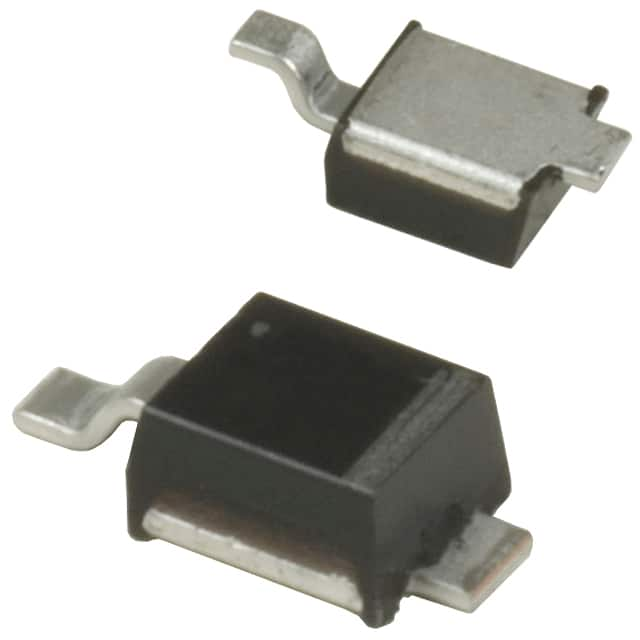1PMT4621E3/TR13
Product Overview
Category
The 1PMT4621E3/TR13 belongs to the category of semiconductor devices, specifically zener diodes.
Use
This product is commonly used for voltage regulation and protection in electronic circuits.
Characteristics
- Zener voltage: 3.3V
- Power dissipation: 1.5W
- Package type: SOD-123
Package
The 1PMT4621E3/TR13 is typically available in tape and reel packaging, with a quantity of 3000 units per reel.
Specifications
- Zener voltage: 3.3V
- Power dissipation: 1.5W
- Forward voltage: 1.2V
- Reverse current: 5µA
- Operating temperature range: -65°C to +150°C
Detailed Pin Configuration
The 1PMT4621E3/TR13 has two pins, with the cathode connected to the marked side of the package and the anode connected to the unmarked side.
Functional Features
- Precise voltage regulation
- Overvoltage protection
- Low reverse leakage current
Advantages
- Small form factor
- High reliability
- Wide operating temperature range
Disadvantages
- Limited power dissipation capability
- Sensitive to temperature variations
Working Principles
The 1PMT4621E3/TR13 operates based on the principle of the zener effect, where it maintains a constant voltage drop across its terminals when reverse biased.
Detailed Application Field Plans
This zener diode is widely used in various electronic circuits such as voltage regulators, overvoltage protection circuits, and signal clamping circuits.
Detailed and Complete Alternative Models
Some alternative models to the 1PMT4621E3/TR13 include: - BZX84C3V3 - MMSZ5232B - PZM3.3NB2A
In conclusion, the 1PMT4621E3/TR13 zener diode offers precise voltage regulation and overvoltage protection in a compact package, making it suitable for a wide range of electronic applications.
Word count: 287
Senaraikan 10 soalan dan jawapan biasa yang berkaitan dengan aplikasi 1PMT4621E3/TR13 dalam penyelesaian teknikal
What is 1PMT4621E3/TR13?
- 1PMT4621E3/TR13 is a type of Zener diode, which is commonly used for voltage regulation and transient voltage suppression in electronic circuits.
What are the key specifications of 1PMT4621E3/TR13?
- The key specifications include a breakdown voltage of 21V, a maximum reverse leakage current of 5µA, and a maximum forward voltage of 1.2V at 200mA.
How can 1PMT4621E3/TR13 be used for voltage regulation?
- 1PMT4621E3/TR13 can be used to regulate voltage by maintaining a constant output voltage across its terminals, even when there are fluctuations in the input voltage.
In what applications is 1PMT4621E3/TR13 commonly used?
- This Zener diode is commonly used in power supplies, voltage regulators, and other electronic circuits where stable voltage levels are required.
What is the role of 1PMT4621E3/TR13 in transient voltage suppression?
- It helps protect sensitive electronic components from voltage spikes or transients by diverting excessive voltage away from the circuit.
What is the maximum power dissipation of 1PMT4621E3/TR13?
- The maximum power dissipation is typically around 500mW, making it suitable for low to moderate power applications.
How does 1PMT4621E3/TR13 behave under different temperature conditions?
- It exhibits stable performance over a wide temperature range, making it suitable for use in various environmental conditions.
Can 1PMT4621E3/TR13 be used in automotive electronics?
- Yes, it is often used in automotive electronics for voltage regulation and transient voltage suppression due to its reliability and performance.
What are the typical mounting and packaging options for 1PMT4621E3/TR13?
- It is available in various surface mount packages such as SOD-123 and SOD-323, making it suitable for compact circuit designs.
Are there any precautions to consider when using 1PMT4621E3/TR13 in technical solutions?
- It's important to ensure proper heat dissipation and current limiting to prevent damage to the diode, and to follow manufacturer's guidelines for optimal performance.


